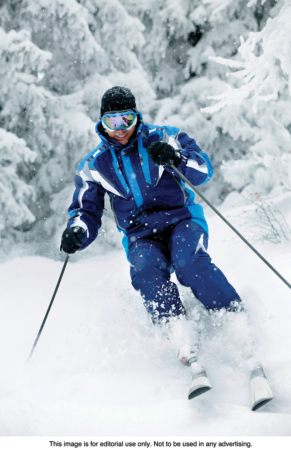Skiing and snowboarding remain very popular among athletes and outdoor enthusiasts who refuse to be relegated to the couch upon the arrival of winter weather. For the millions of men, women and children who can’t wait to hit the slopes each winter, the thrill of racing down snow-covered mountainsides is a feeling unlike any other.
While skiing and snowboarding are popular recreational activities, they can still be dangerous. As a result, it’s imperative that anyone who plans to hit the slopes this winter takes steps to ensure this winter sports season is as safe and successful as it is thrilling.
• Start exercising. If it’s been awhile since you hit the gym or broke a sweat, it’s best to start exercising before you hit the slopes. Your risk of injury is greater if you are out of shape upon returning to the slopes, so start exercising as the season approaches so you can regain any flexibility you might have lost since you last slipped on your skis or strapped into your snowboard. Some strength training exercises can reduce your risk of broken bones should you fall while on the mountain, and the better shape you’re in the more energy you will have to stay on the slopes.
• Reassess your gear. Before your first skiing or snowboarding trip, reexamine your gear to make sure it does not need to be replaced. If your gear has a bit too much wear and tear, the National Ski Areas Association recommends choosing gear that is resistant to wind and water and wearing gear that protects you from the sun, which can still do damage by reflecting off the snow and causing sunburn. In addition, inspect your equipment, including your skis and snowboard, to make sure they are up for another season of hitting the slopes.
• Take lessons. Novice skiers and snowboarders might want to take a refresher course at the onset of each ski and snowboarding season. Qualified instructors can reacquaint you with techniques you might have forgotten since last winter, and such instruction can reduce your risk of injury.
• Ease yourself back in. While it can be tempting to pick up where you left off last season, going too hard on your first trip can increase your risk of injury. Ease yourself back in on your first few trips down the mountain, warming up on easier slopes until you once again get the hang of things and feel comfortable tackling more difficult trails. If you do find yourself struggling on a slope, the NSAA advises that you always leave your skis and snowboard on and side step down the slope.
Many athletes and outdoor enthusiasts anxiously anticipate the day when they can return to the slopes to ski or snowboard. But it’s important that skiers and snowboarders of all skill levels exercise caution so their winter sports season starts off on the right foot.





Leave a Comment
Your email address will not be published. Required fields are marked with *